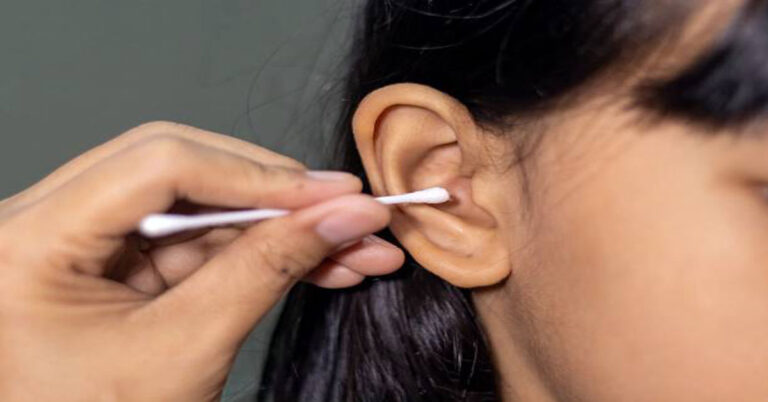
The temporomandibular joint (TMJ) is a critical hinge connecting the jawbone to the skull, enabling essential functions such as chewing, speaking, and yawning. Disorders affecting this joint, collectively referred to as TMJ disorders (TMD), can significantly disrupt daily life by causing pain, restricted jaw movement, and associated symptoms that extend beyond the jaw itself. Understanding TMJ symptoms is essential not only for timely diagnosis and treatment but also for preventing long-term complications like chronic pain, misalignment, or dental problems.
This detailed article explores TMJ symptoms, their causes, associated risk factors, diagnosis, treatment options, lifestyle adaptations, exercises, and preventive strategies. It also provides structured tables for clarity and ensures unique, comprehensive content suitable for patients, caregivers, healthcare professionals, and anyone interested in understanding this condition.
1. Understanding TMJ and Its Function
The temporomandibular joint is a highly specialized synovial joint that allows both rotational and translational movements. It is cushioned by a fibrocartilaginous disc that absorbs shocks during jaw movements. TMJ disorders occur when the joint, muscles around the jaw, or connective tissues are inflamed, misaligned, or injured. These disorders are multifactorial and can manifest in a wide spectrum of symptoms ranging from mild discomfort to severe pain affecting eating, speaking, and facial expressions.
Key functions of TMJ include:
- Mastication (Chewing): Allows the up-and-down and side-to-side motion of the jaw.
- Speech: Facilitates articulation and mouth movement.
- Swallowing: Supports coordinated jaw and tongue movements.
- Facial Expressions: Contributes to natural expressions through jaw mobility.
Any dysfunction in the TMJ can disrupt these activities, causing both physical and emotional distress.
2. Common TMJ Symptoms
TMJ symptoms can vary in intensity, frequency, and location. While some individuals experience occasional mild discomfort, others suffer chronic pain with functional limitations. Below is a structured overview.
Table 1: Common TMJ Symptoms
| Symptom | Description | Impact on Daily Life |
|---|---|---|
| Jaw Pain | Aching or tenderness in jaw muscles | Difficulty chewing, yawning |
| Clicking or Popping | Audible sounds during jaw movement | Often alarming, may indicate disc displacement |
| Locking of Jaw | Jaw gets stuck open or closed | Restricts normal mouth opening |
| Ear Pain | Pain near or inside the ear | Can be misdiagnosed as ear infection |
| Headaches | Tension or migraine-like headaches | Chronic discomfort affecting concentration |
| Facial Pain | Pain around cheeks or temples | Can extend to neck and shoulders |
| Difficulty Chewing | Pain while eating | Alters dietary habits |
| Swelling | Localized swelling around jaw | Visible asymmetry, tenderness |
| Tinnitus | Ringing or buzzing in the ear | Often associated with TMJ inflammation |
| Neck and Shoulder Pain | Muscle strain due to jaw misalignment | Reduced mobility and posture issues |
These TMJ symptoms often overlap with other conditions, making accurate diagnosis critical.
3. Causes of TMJ Disorders
TMJ symptoms disorders are caused by a combination of structural, muscular, and behavioral factors. Understanding the root cause is essential for effective treatment.
Primary Causes
- Jaw Injury or Trauma: Fractures, dislocations, or direct impacts can impair joint alignment.
- Arthritis: Osteoarthritis or rheumatoid arthritis can degrade joint cartilage.
- Teeth Grinding (Bruxism): Repeated stress from clenching or grinding damages muscles and joint structures.
- Dislocation or Disc Displacement: Misaligned disc within the TMJ can lead to clicking and locking.
- Muscle Overuse: Excessive chewing, gum chewing, or nail-biting strains TMJ muscles.
- Poor Posture: Forward head posture stresses jaw muscles and connective tissues.
- Stress and Anxiety: Emotional stress can lead to increased jaw clenching.
Secondary Contributing Factors
- Malocclusion (improper bite)
- Connective tissue disorders
- Hormonal influences (higher prevalence in women)
- Age-related joint degeneration
4. Risk Factors for TMJ Disorders
Certain individuals are more prone to TMJ disorders due to genetic, behavioral, or environmental factors.
Table 2: TMJ Disorder Risk Factors
| Risk Factor | Description | Impact |
|---|---|---|
| Gender | Women are more susceptible | Hormonal fluctuations and joint laxity |
| Age | Common in ages 20-40 | Increased stress and lifestyle habits |
| Bruxism | Teeth grinding at night | Muscle fatigue and joint wear |
| Arthritis | Joint inflammation | Accelerates cartilage breakdown |
| Trauma History | Previous jaw injuries | Structural instability |
| Stress | High emotional stress | Muscle tension, clenching habits |
| Posture Issues | Forward head posture | Alters jaw alignment |
| Dental Problems | Malocclusion or missing teeth | Causes uneven force distribution |
Early identification of risk factors allows preventive care and reduces chronic progression.
5. Diagnosis of TMJ Disorders
Diagnosing TMJ symptoms disorders requires a multi-step approach combining patient history, physical examination, and sometimes imaging.
Steps in TMJ Diagnosis
- Patient History: Assessment of pain duration, triggers, onset, and associated symptoms.
- Physical Examination: Evaluates jaw range of motion, tenderness, swelling, and abnormal sounds.
- Palpation of Muscles: Checks for tenderness in masseter, temporalis, and neck muscles.
- Imaging Studies:
- X-ray: Bone structure assessment
- MRI: Disc positioning and soft tissue evaluation
- CT Scan: Detailed joint visualization
- Functional Assessment: Evaluates chewing efficiency, speech patterns, and jaw coordination.
- Referral to Specialists: Dentists, oral surgeons, or ENT specialists if symptoms persist.
6. Treatment Options for TMJ Disorders
Treatment depends on symptom severity, cause, and patient preference. Approaches range from conservative therapy to surgical interventions.
6.1 Conservative and Non-Surgical Treatment
- Medications: Pain relievers, anti-inflammatory drugs, or muscle relaxants.
- Physical Therapy: Jaw exercises, posture correction, and stretching.
- Lifestyle Modifications: Stress management, soft diet, and avoiding excessive jaw movements.
- Dental Appliances: Mouth guards or splints for bruxism control.
- Hot/Cold Compresses: Reduce pain and muscle tension.
6.2 Minimally Invasive Procedures
- Arthrocentesis: Flushing the joint to reduce inflammation.
- Injections: Corticosteroid or Botox injections for pain relief.
6.3 Surgical Treatment
TMJ symptoms for severe or unresponsive cases:
- Arthroscopy
- Open-joint surgery
- Joint replacement in advanced degeneration
7. Exercises and Home Remedies for TMJ
Physical therapy and at-home exercises help improve mobility, reduce pain, and prevent worsening symptoms.
Common TMJ Exercises
| Exercise | Technique | Benefit |
|---|---|---|
| Jaw Stretch | Open mouth slowly and hold 5 sec | Increase flexibility |
| Resistance Training | Apply gentle resistance with hand | Strengthen jaw muscles |
| Side-to-Side Movements | Move jaw left and right | Improve mobility |
| Chin Tucks | Align head and neck | Posture correction |
| Massage | Gentle massage of jaw muscles | Reduce tension and pain |
| Ice/Heat Therapy | Alternate compress | Reduce inflammation and stiffness |
Consistency in these exercises reduces TMJ symptoms discomfort over time.
8. Lifestyle and Preventive Measures
Preventing TMJ disorders involves lifestyle awareness and habit management.
- Avoid Excessive Chewing: Limit gum and hard foods.
- Manage Stress: Meditation, yoga, and relaxation techniques.
- Maintain Proper Posture: Keep head and neck aligned.
- Regular Dental Checkups: Address malocclusion or teeth grinding early.
- Sleep Position: Avoid sleeping on stomach with jaw twisted.
- Avoid Jaw Clenching: Awareness during daily activities.
9. When to Seek Medical Attention
Early recognition of severe or persistent TMJ symptoms is critical.
- Continuous jaw pain lasting more than 2 weeks
- Locking or limited jaw opening
- Severe headaches, earaches, or facial swelling
- Clicking associated with discomfort
- Pain affecting sleep or daily function
Delayed care may worsen joint degeneration and complicate treatment.
10. Long-Term Implications of Untreated TMJ Disorders
Ignoring TMJ symptoms can lead to:
- Chronic pain and migraines
- Permanent joint misalignment
- Worn teeth and bite changes
- Reduced jaw mobility
- Emotional stress and sleep disturbances
- Increased risk of arthritis in TMJ
Timely intervention can prevent these long-term consequences.
Conclusion
TMJ disorders are complex conditions that impact jaw function, facial comfort, and overall quality of life. Awareness of TMJ symptoms—from jaw pain and clicking sounds to headaches and neck discomfort—is critical for early diagnosis and treatment. With proper care, including lifestyle modifications, exercises, medical therapies, and dental interventions, most individuals can manage symptoms effectively. Understanding causes, risk factors, and preventive strategies ensures better long-term jaw health, improved comfort, and enhanced daily functionality.
FAQs
1. What are the earliest signs of TMJ disorder?
Jaw pain, clicking, popping, or difficulty opening the mouth are common early signs.
2. Can stress cause TMJ symptoms?
Yes. Stress often leads to teeth grinding and jaw clenching, exacerbating TMJ discomfort.
3. Is TMJ disorder permanent?
Most TMJ disorders are manageable with treatment; surgery is rarely required.
4. Can TMJ affect my ears and head?
Yes. Pain can radiate to ears, temples, and cause tension headaches.
5. Are exercises effective for TMJ symptom relief?
Yes. Targeted jaw and neck exercises improve mobility and reduce pain over time.







